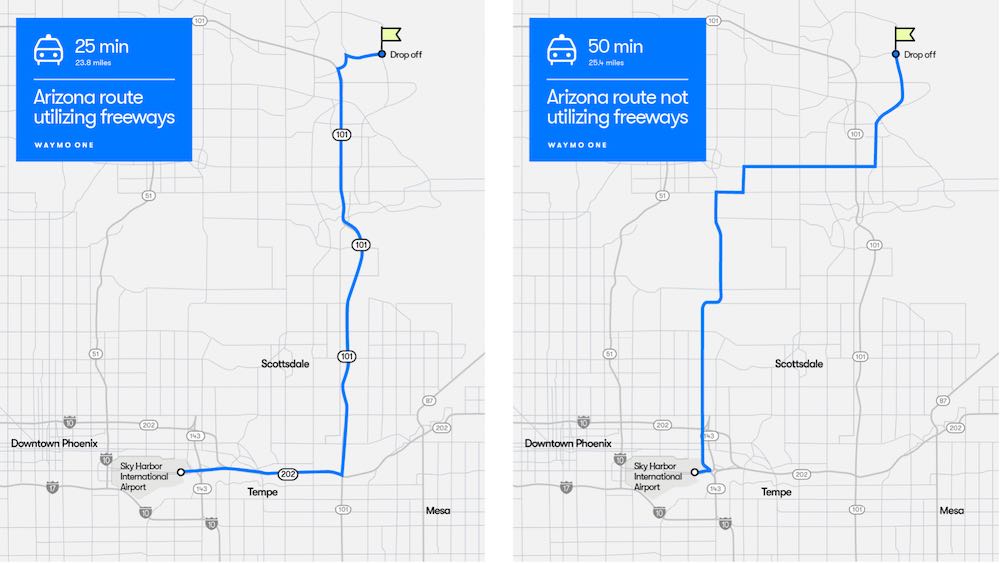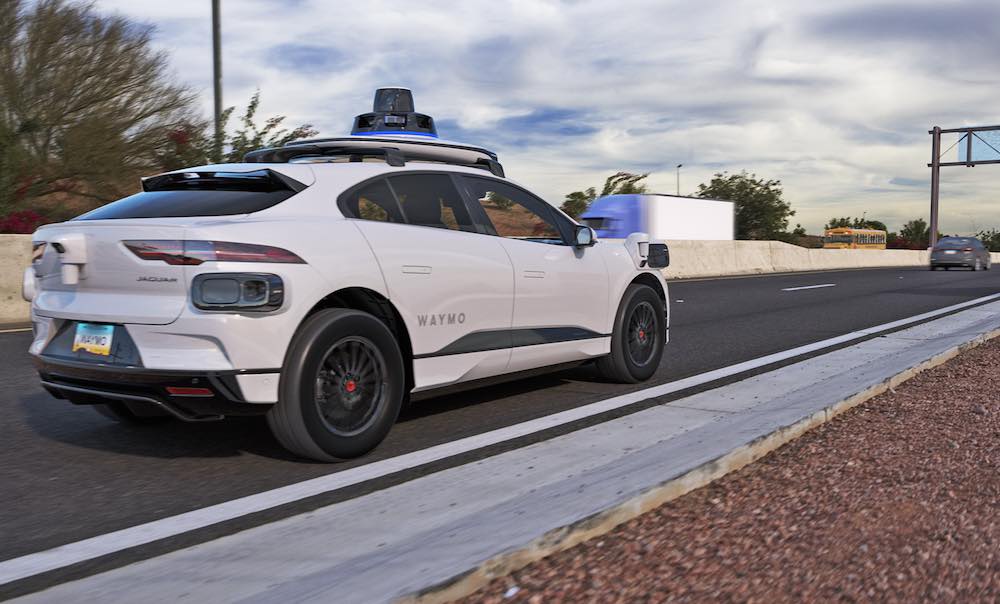|
Listen to this article  |
Waymo will begin testing its robotaxis on highways in Phoenix without a human safety driver. The rides will be available only to company employees, and their guests, to start. Waymo’s vehicles have been allowed on highways but required a human safety driver in the front seat to handle any issues.
The program will start outside of rush-hour periods and could eventually ramp up to a 24-hour service. The inability to use highways has been a drawback of taking a robotaxi compared to traditional taxis or Ubers. Adding highway service could make trips more efficient and encourage more people to use the service. Waymo said adding highways could reduce drive times 50% on certain routes.
“The ability to utilize freeways will be especially important as we scale our operations to other cities,” the company wrote in a blog announcing the highway testing. “For this reason, we are laser-focused on our freeway ride-hailing testing.”
When asked if there are speed restrictions for its driverless tests on highways, a Waymo spokesperson told The Robot Report: “The Waymo Driver abides by the posted speed limit but can also respond to dynamic situations like decreasing its speed for construction or adjusting its speed to safely execute a lane change.”
Waymo operates its ride-hailing service across 225 square miles in metro Phoenix, but it only uses surface streets. The company said it has been gradually ramping up testing on highways over the last year. It also has a robotaxi service up in running in San Francisco. It also recently launched a robotaxi tour in Los Angeles in hopes of soon launching a service there, too.

Example Waymo One route using highways (left) versus using only surface streets. | Credit: Waymo
Waymo capitalizing on autonomous trucking experience
Waymo has plenty of highway driving experience thanks to its autonomous trucking service, Waymo Via. It began quietly testing autonomous trucks in 2017 before launching a pilot in Atlanta in 2018 and then formally launching its trucking division in 2020. It had several partnerships, including J.B. Hunt, Ryder, Uber Freight and UPS.
However, Waymo pumped the brakes on autonomous trucking about six months ago. It decided to “double down” on robotaxis. While some engineers from the trucking division were laid off, many took other positions at the company. While class-8 trucks are certainly much different than robotaxis, Waymo is hoping to pivot some of the technology and lessons learned from trucks to robotaxis.
Another potential differentiator
At the moment, Waymo doesn’t have much competition in the U.S. Following many incidents, Cruise paused operations nationwide and laid off 900 employees, or 24% of its workforce. May Mobility recently launched an autonomous shuttle service for residents of a retirement community in Phoenix. But it’s a small deployment. Two autonomous minivans will be available to a select group of early riders who live in Sun City. The service will cover about 4.5 miles of Sun City, bringing the early riders to a variety of spots such as resident buildings, medical centers, and other key locations.
In December 2023, Waymo started offering curbside drop-off and pickup at the Phoenix airport. And in October 2023, its robotaxi service became available on Uber in Phoenix. Highway driving would be a major win for Waymo in Phoenix and, hopefully, other cities in the not-to-distant future.

A Waymo robotaxi driving on a highway in Phoenix.
Credit: Source link


Comments are closed.